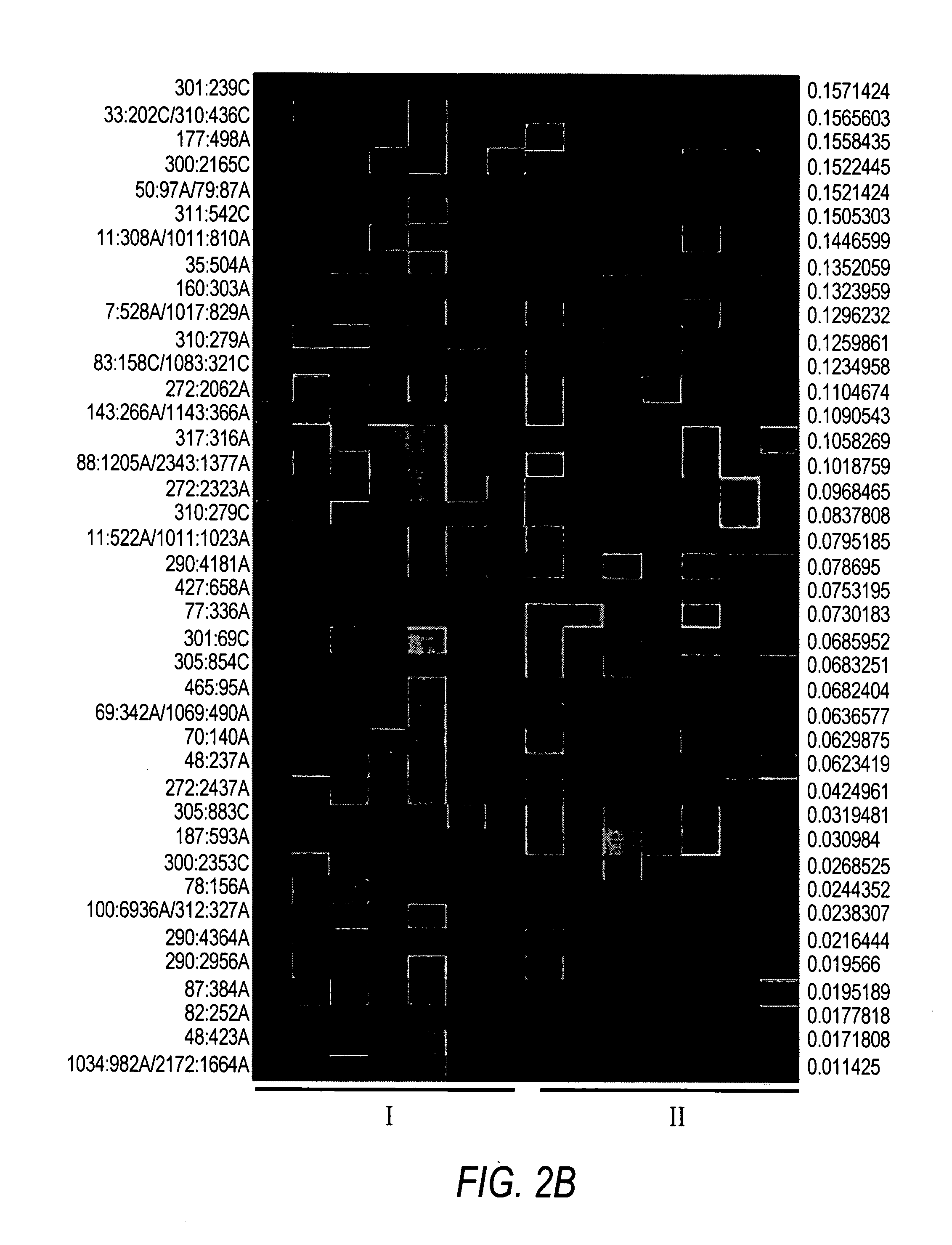Method and nucleic acids for the analysis of astrocytomas
a technology of astrocytoma and nucleic acids, applied in the field of methods and nucleic acids for the analysis of astrocytoma, can solve the problems of slow growth and generally noninvasive, diagnosis by such methodologies does not utilise the molecular basis of the progression, and no single marker has been shown to be sufficient for the distinction between the two tumors
- Summary
- Abstract
- Description
- Claims
- Application Information
AI Technical Summary
Benefits of technology
Problems solved by technology
Method used
Image
Examples
example 2
[0075] Methylation Analysis of the Gene NF1.
[0076] The following example relates to a fragment of the gene NF1 in which a specific CG-position is to be analyzed for methylation.
[0077] In the first step, a genomic sequence is treated using bisulfite (hydrogen sulfite, disulfite) in such a manner that all cytosines which are not methylated at the 5-position of the base are modified in such a manner that a different base is substituted with regard to the base pairing behavior while the cytosines methylated at the 5-position remain unchanged.
[0078] If bisulfite solution is used for the reaction, then an addition takes place at the non-methylated cytosine bases. Moreover, a denaturating reagent or solvent as well as a radical interceptor must be present. A subsequent alkaline hydrolysis then gives rise to the conversion of non-methylated cytosine nucleobases to uracil. The chemically converted DNA is then used for the detection of methylated cytosines. In the second method step, the trea...
example 3
[0081] Methylation Analysis of the Gene MLH1.
[0082] The following example relates to a fragment of the gene MLH1 in which a specific CG-position is to be analyzed for methylation.
[0083] In the first step, a genomic sequence is treated using bisulfite (hydrogen sulfite, disulfite) in such a manner that all cytosines which are not methylated at the 5-position of the base are modified in such a manner that a different base is substituted with regard to the base pairing behavior while the cytosines methylated at the 5-position remain unchanged.
[0084] If bisulfite solution is used for the reaction, then an addition takes place at the non-methylated cytosine bases. Moreover, a denaturating reagent or solvent as well as a radical interceptor must be present. A subsequent alkaline hydrolysis then gives rise to the conversion of non-methylated cytosine nucleobases to uracil. The chemically converted DNA is then used for the detection of methylated cytosines. In the second method step, the tr...
example 4
[0087] Methylation Analysis of the Gene CSNK2B.
[0088] The following example relates to a fragment of the gene CSNK2B in which a specific CG-position is to be analyzed for methylation.
[0089] In the first step, a genomic sequence is treated using bisulfite (hydrogen sulfite, disulfite) in such a manner that all cytosines which are not methylated at the 5-position of the base are modified in such a manner that a different base is substituted with regard to the base pairing behavior while the cytosines methylated at the 5-position remain unchanged.
[0090] If bisulfite solution is used for the reaction, then an addition takes place at the non-methylated cytosine bases. Moreover, a denaturating reagent or solvent as well as a radical interceptor must be present. A subsequent alkaline hydrolysis then gives rise to the conversion of non-methylated cytosine nucleobases to uracil. The chemically converted DNA is then used for the detection of methylated cytosines. In the second method step, th...
PUM
| Property | Measurement | Unit |
|---|---|---|
| length | aaaaa | aaaaa |
| heat-resistant | aaaaa | aaaaa |
| fluorescence | aaaaa | aaaaa |
Abstract
Description
Claims
Application Information
 Login to View More
Login to View More - R&D
- Intellectual Property
- Life Sciences
- Materials
- Tech Scout
- Unparalleled Data Quality
- Higher Quality Content
- 60% Fewer Hallucinations
Browse by: Latest US Patents, China's latest patents, Technical Efficacy Thesaurus, Application Domain, Technology Topic, Popular Technical Reports.
© 2025 PatSnap. All rights reserved.Legal|Privacy policy|Modern Slavery Act Transparency Statement|Sitemap|About US| Contact US: help@patsnap.com



